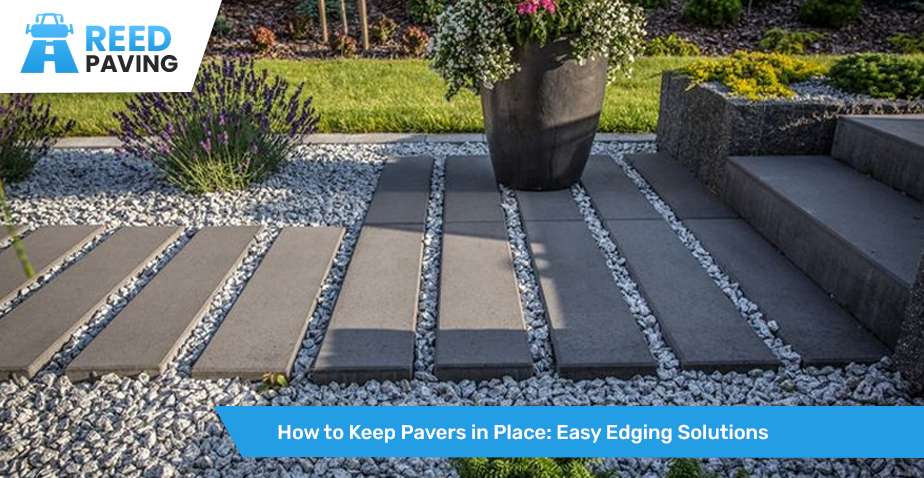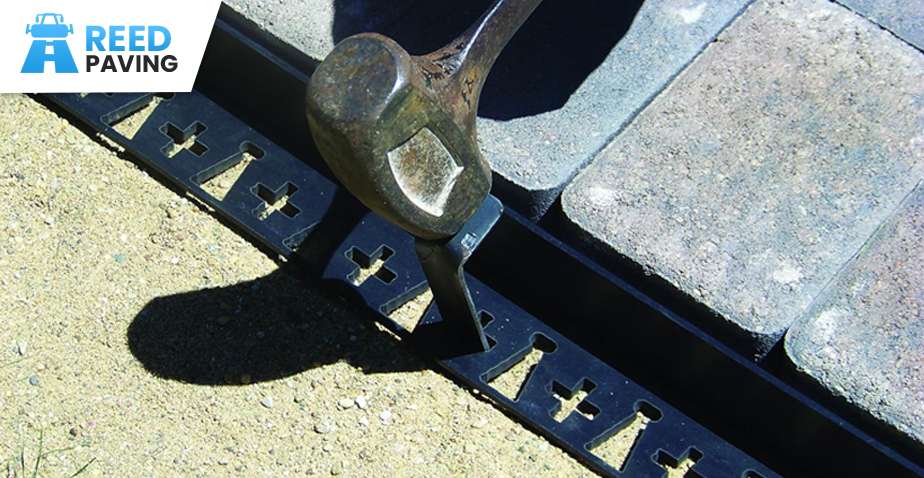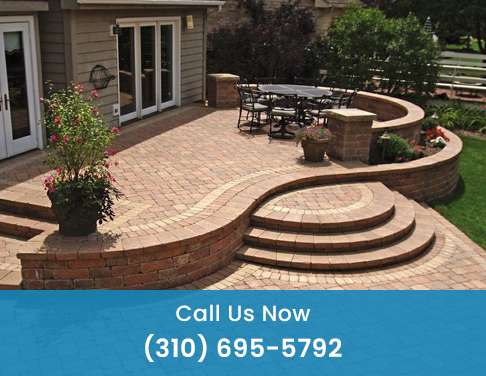How to Keep Pavers in Place: Easy Edging Solutions
Pavers are a popular choice for creating beautiful walkways, patios, and driveways. They are versatile, durable, and come in many different shapes and colors. However, one of the most important aspects of installing pavers is making sure they stay in place over time. Without proper edging, pavers can shift, spread out, or sink, leading to uneven surfaces and a messy appearance. Exploring various paver edging ideas can help ensure that edging holds the pavers together, keeping them firmly in place and maintaining the structure of your paved area.
Choosing the right edging solution is essential to ensure that your pavers stay where they are supposed to. There are several different types of edging available, each with its own set of benefits. Whether you’re a seasoned DIY enthusiast or a beginner, there are easy edging solutions that can help you keep your pavers in place.
1. Plastic Edging
Plastic edging is one of the most popular and affordable options for keeping pavers in place. It’s lightweight, easy to install, and can be shaped to fit curves and angles, making it a great choice among various paver edging ideas.
Flexibility and Versatility
Plastic edging is flexible, which makes it perfect for creating curved paths or irregularly shaped patios. It’s available in long strips that can be cut to size, allowing you to customize the edging to fit your project. This type of edging is often secured in place with plastic or metal stakes.
Installation Tips
To install plastic edging, first, lay out your pavers and then position the edging around the perimeter. Use stakes to secure the edging into the ground, making sure it’s tight against the pavers. This will prevent the pavers from shifting and keep the edges looking neat. If you’re working with curves, cut small slits into the edging to help it bend smoothly around corners.
Durability
While plastic edging is easy to install and flexible, it’s not the most durable option. Over time, it can become brittle and crack, especially in areas with extreme weather. However, with proper installation and care, plastic edging can last for several years and keep your pavers in place effectively.
2. Metal Edging
Metal edging is a more durable and long-lasting option compared to plastic. It’s strong, resistant to weather, and provides a clean, sharp edge to your paved areas.
Strength and Durability
Metal edging is made from materials like aluminum or steel, which are both strong and durable. This type of edging is less likely to bend or break, making it a great choice for areas with heavy foot traffic or extreme weather conditions. Metal edging can also be used for straight or curved edges, depending on your design.
Installation Tips
To install metal edging, start by laying out your pavers and positioning the edging along the edges. Secure the edging with metal stakes, making sure they are driven deep into the ground for stability. Metal edging can be cut to size with a hacksaw, and any sharp edges should be filed down to prevent injury.
Aesthetic Appeal
One of the advantages of metal edging is its sleek and modern appearance. It provides a clean line that can enhance the look of your paver project. Over time, some metal edging may develop a natural patina, adding a rustic charm to your outdoor space.
3. Concrete Edging
Concrete edging is a more permanent solution for keeping pavers in place. It’s strong, durable, and can be customized to match the color and style of your pavers.
Strength and Stability
Concrete edging is one of the strongest options available. It’s poured in place, creating a solid barrier that holds pavers firmly in position. Concrete edging is ideal for areas with heavy foot or vehicle traffic, as it can withstand significant pressure without shifting or cracking.
Installation Tips
Installing concrete edging requires a bit more work compared to other options. First, dig a trench around the edge of your paver area. Mix the concrete according to the instructions and pour it into the trench. Use a trowel to smooth the surface and shape the edge. It’s important to work quickly before the concrete sets, and to keep the edging straight and level.
Customization
Concrete edging offers the benefit of customization. You can tint the concrete to match your pavers or add texture for a more decorative look. You can also stamp or mold concrete edging into different shapes to create a unique design.
4. Brick or Paver Edging
Brick or paver edging is an attractive and cohesive way to keep your pavers in place. Using the same or similar pavers to create a border around your paved area is one of the stylish paver edging ideas that adds both functionality and visual appeal.
Cohesive Look
Using bricks or pavers as edging creates a seamless look that blends in with the rest of your paving project. This type of edging is both functional and decorative, adding a finished look to your walkway, patio, or driveway.
Installation Tips
To install brick or paver edging, start by digging a trench around the edge of your paver area. Lay the bricks or pavers on a bed of sand or gravel, making sure they are level with the rest of the surface. For added stability, you can use a concrete base or adhesive to hold the bricks in place. Make sure the edges are tight and there are no gaps between the pavers.
Durability
Brick or paver edging is durable and can last for many years with minimal maintenance. However, it’s important to ensure that the bricks are properly secured to prevent shifting or loosening over time.
5. Natural Stone Edging
Natural stone edging offers a rustic and natural look that can enhance the beauty of your outdoor space. It’s strong, durable, and blends in well with the natural surroundings.
Natural Aesthetic
Natural stone edging uses materials like granite, limestone, or flagstone. It adds a touch of nature to your paver project and helps you create various looks, from rustic to elegant. Natural stone edging suits gardens, walkways, and patios perfectly.
Installation Tips
To install natural stone edging, dig a trench around the edge of your paver area. Place the stones in the trench, ensuring they stay level and stable. For added stability, lay gravel or concrete underneath the stones. Often, install natural stone edging in a random or staggered pattern to achieve a more organic look.
Durability
Natural stone edging is very durable and can last for decades. It’s resistant to weather, heavy traffic, and erosion. However, because natural stone is heavier and more expensive, it requires a bit more effort to install compared to other options.
6. Timber Edging
Timber edging is a warm and natural option that can complement a variety of outdoor spaces. It’s easy to install and offers a rustic, country-style look.
Natural Warmth
Timber edging is made from wood, which gives it a natural warmth that blends well with garden spaces. It’s available in different types of wood, such as cedar or treated pine, which are resistant to rot and insects. Timber edging is perfect for garden paths, flower beds, and patios.
Installation Tips
To install timber edging, start by laying out your pavers and digging a trench around the edge. Place the timber in the trench, making sure it’s level with the pavers. Secure the timber with wooden stakes driven into the ground. For added stability, you can use screws or nails to attach the timber to the stakes.
Maintenance
While timber edging adds natural beauty to your space, it does require some maintenance. Over time, wood can rot or become infested with insects, so it’s important to choose treated wood or regularly seal the timber to protect it from the elements.
7. Gabion Edging
Gabion edging is a unique and modern solution for keeping pavers in place. It involves using metal cages filled with stones to create a strong and durable border.
Unique Design
Gabion edging provides a distinctive and industrial look that adds character to your outdoor space. Fill the metal cages with various types of stones, such as river rocks or granite, to create a custom design. Gabion edging suits modern landscapes or areas with heavy foot traffic perfectly.
Installation Tips
To install gabion edging, dig a trench around the edge of your paver area. Place the gabion cages in the trench and fill them with stones. The weight of the stones keeps the cages in place, creating a strong and stable edge. Use gabion edging for both straight and curved borders, depending on your design.
Durability
Gabion edging is extremely durable and can withstand heavy traffic and harsh weather conditions. The metal cages are resistant to rust and corrosion, and the stones provide excellent stability. Gabion edging requires minimal maintenance and can last for many years.
8. Tips for Maintaining Your Edging
Proper maintenance is essential to keeping your edging in good condition and ensuring that your pavers stay in place.
Regular Inspections
Inspect your edging regularly for any signs of damage, such as cracks, shifting, or loose sections. Address any issues as soon as they arise to prevent further damage.
Weeding
Weeds can grow between pavers and along the edges, which can cause the pavers to shift. Regularly remove weeds and apply a weed barrier or weed killer to keep your paved area looking neat.
Re-Leveling
Over time, pavers and edging may settle or shift due to changes in the ground. If you notice any unevenness, re-level the pavers and edging to keep the surface smooth and safe.
FAQs
Plastic edging is one of the easiest types of edging to install. It’s lightweight, flexible, and can be secured with stakes. It’s a great option for beginners and those looking for a quick and easy solution.
Yes, natural stone edging can be used for curved paths. Because natural stones are irregularly shaped, they can be arranged to follow the curve of your path. Just make sure to place them securely to prevent shifting.
It’s a good idea to check your paver edging at least once a year, especially after winter or heavy rainfall. Regular inspections help you catch any issues early and keep your pavers in good condition.
If your pavers start to shift, check the edging to make sure it’s secure. Re-level the pavers and add more sand or gravel if needed. Tighten or replace any loose edging to keep the pavers in place.
Keeping your pavers in place doesn’t have to be difficult. With the right edging solution, you can create a beautiful and long-lasting paved area that stays neat and tidy for years to come. Whether you choose plastic, metal, concrete, or another type of edging, the key is to install it properly and maintain it regularly. By following these easy tips, you can enjoy a well-maintained outdoor space that enhances the beauty of your home.



